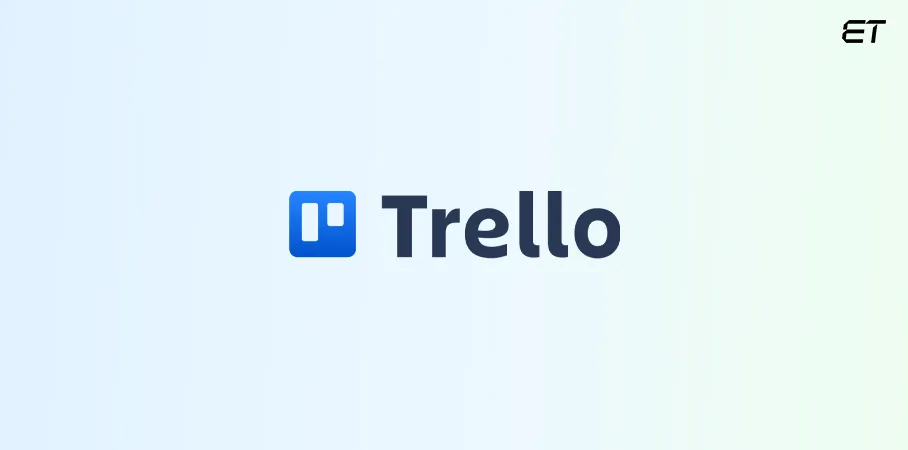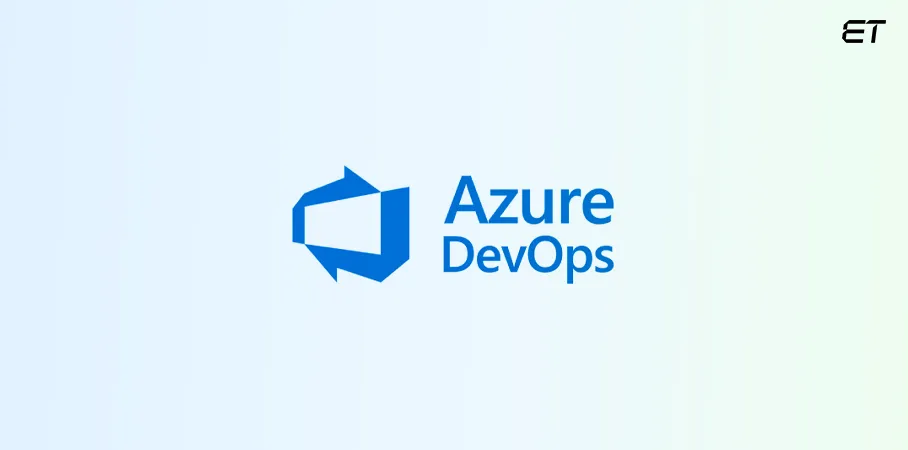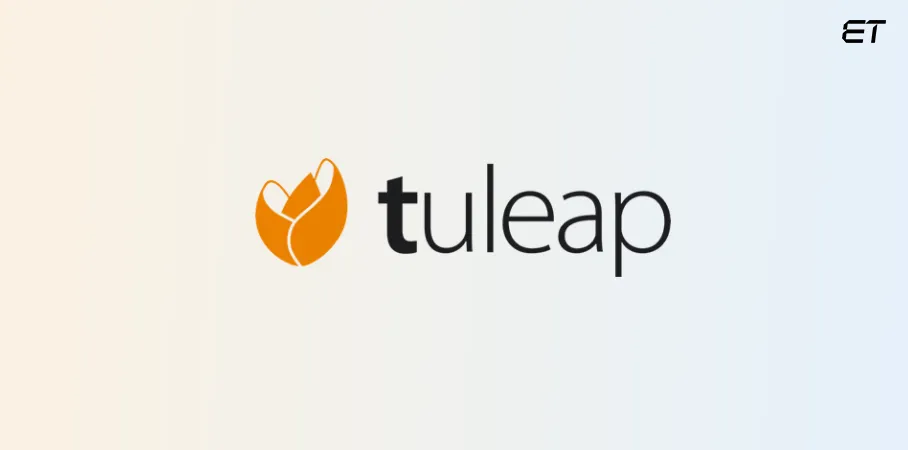
Your Ultimate Guide to the Right Agile Development Tools
Imagine watching two teams working on the same project. Both follow Agile methodologies, have skilled professionals, and aim for rapid delivery. Yet, one team consistently meets deadlines, delivers high-quality products, and adapts to changes seamlessly, while the other struggles with miscommunication, delays, and endless rework.
What’s the difference?
It’s not just about having Agile processes in place; it’s about having the right agile development tools to bring those processes to life. Agile is a term without them; plans stay on paper, tasks slip through the cracks, and productivity suffers.
Choosing the right agile development project management tools is essential for your project. The right tools can mean the difference between staying ahead of the competition or constantly playing catch-up.
In this blog, we’ll explore how Agile tools drive business agility, improve collaboration, and accelerate software delivery at scale. How do you choose the best agile development tools for your team? Let’s understand!
Build faster, smarter, and agile. Transform your development process today!
What are Agile Development Tools?
Agile development tools are software solutions designed to support and enhance Agile methodologies in software development and project management. These tools help your teams plan, collaborate, track progress, automate workflows, and improve efficiency while following Agile frameworks like Scrum, Kanban, SAFe, and Lean.
Agile software development management tools act as a central hub where your developers, project managers, and stakeholders can align their goals, track tasks, and ensure continuous delivery of high-quality software.
Functions of Agile Development Tools
Let’s understand the functions of agile development tools and how they help your business.
1. It helps your teams create roadmaps, assign tasks, and track progress efficiently.
2. Agile development tools ensure seamless communication between your cross-functional teams, whether remote or in-house.
3. Agile tools facilitate sprint planning, backlog prioritization, and iteration tracking.
4. It automates testing and deployment (CI/CD) for faster software releases.
5. It provides you with real-time data and insights for better decision-making and performance tracking.
6. Agile development tools integrate with your existing enterprise systems (ERP, CRM, DevOps pipelines) to ensure smooth workflows.
Want flawless software? Learn our software testing process using agile development tools at eLuminous!
Top Agile Development Tools to Power Your Business
| Sr. No. | Agile Development Tools | Features | Pricing | Ratings |
| 1. | Jira | You can access real-time insights with burndown charts, velocity charts, and sprint reports. |
|
4.4/5 |
| 2. | Trello | It supports a drag-and-drop interface for easy task management. |
|
4.6/5 |
| 3. | Azure DevOps | You get access to unlimited cloud-hosted private Git repositories. |
|
4.4/5 |
| 4. | ClickUp | It connects you with tools like Slack, Google Workspace, and GitHub. |
|
4.8/5 |
| 5. | Asana | You can visualize project plans with Gantt-style timelines. |
|
4.5/5 |
| 6. | Monday.com | It lets you automate your routine tasks to enhance efficiency and reduce manual workload. |
|
4.7/5 |
| 7. | GitLab | You can host and manage repositories with integrated version control. |
|
4.4/5 |
| 8. | Zoho Sprints | You can prioritize and manage your user stories, tasks, and bugs in a centralized backlog. |
|
4.4/5 |
| 9. | Pivotal Tracker | Keep all your team members on the same page with instant updates and shared views. |
|
4.2/5 |
| 10. | Tuleap | It adapts agile workflows to fit your team’s specific project requirements. |
|
4.4/5 |
Selecting the right agile development tools can make or break your agile transformation. With countless options available, it’s crucial to understand which tools align best with your team’s needs. The right tools enhance collaboration, automation, and efficiency, helping businesses deliver software faster and with higher quality.
Here’s a breakdown of the top agile development project management tools high-performing teams and enterprises use.
1. Jira

Developed by Atlassian, Jira is one of the leading agile development tools widely used by software development teams across big enterprises. It offers you robust features tailored to various agile methodologies, including Scrum and Kanban.
Features of Jira:
Let’s look at the features of Jira:
- Customizable Scrum and Kanban boards to visualize workflows and track progress efficiently.
- You can access real-time insights with burndown charts, velocity charts, and sprint reports.
- You can prioritize and manage tasks seamlessly.
- With Jira, you can connect with numerous tools like Confluence, Bitbucket, and GitHub.
Let’s glance at some statistics of Jira:
- Jira is utilized by over 65,000 companies worldwide, including industry giants like Spotify, eBay, and Airbnb.
- Teams using Jira have reported a 23% increase in project visibility and a 20% improvement in team productivity.
Jira Pricing:
Let’s look at the pricing of Jira:
- Free: 0
- Standard: $7.53/ month per user
- Premium: $13.53/ month per user
- Enterprise: Custom Pricing
Why Should You Choose Jira?
Jira’s flexibility and extensive feature set make it ideal if you are seeking a comprehensive solution to manage complex projects while maintaining agility within your team.
Jira Rating: 4.4/5
2. Trello

Trello is also one of Atlassian’s agile development tools. It is a user-friendly tool that employs a card-based system to help your teams organize tasks and projects visually.
Features of Trello:
Let’s glance at what features Trello offers us:
- It supports a drag-and-drop interface for easy task management.
- You can automate repetitive tasks without coding.
- It provides you with real-time updates, file attachments, and commenting features.
- It enhances your team’s functionality with integrations like Slack, Google Drive, and Jira.
Let’s glance at some statistics of Trello:
- Trello boasts over 50 million registered users globally.
- Organizations using Trello have reported a 25% reduction in project completion time after adopting it.
Trello Pricing:
Let’s glance at the pricing Trello offers us:
- Free: 0
- Standard: $6/month per user
- Premium: $12.50/month per user
- Enterprise: $17.50/ month per user (if billed annually)
Why Should You Choose Trello?
Trello is ideal if you are seeking a straightforward, visual approach to task management without the complexity of more extensive project management tools.
Trello Rating: 4.6/5
3. Azure DevOps

Microsoft Azure DevOps provides a suite of agile development tools for planning, developing, testing, and delivering applications efficiently.
Features of DevOps:
Let’s understand the features of Azure DevOps:
- It provides you with agile planning tools with Kanban boards, backlogs, and custom reporting.
- It provides you with CI/CD for building, testing, and deploying code across various platforms.
- You get access to unlimited cloud-hosted private Git repositories.
- Azure provides you with integrated testing solutions to ensure quality.
Let’s glance at some statistics of Azure DevOps:
- Companies like Shell, BAE Systems, and Rolls-Royce trust Azure DevOps.
- Organizations have experienced up to a 60% reduction in deployment times using Azure Pipelines.
Azure DevOps Pricing:
Let’s understand the pricing of Azure DevOps:
- Basic Plan: First 5 users free, then $6 per user per month
- Basic + Test Plans: $52 per user per month
Why Should You Choose Azure DevOps?
It is perfect for you if you are seeking an all-encompassing development and deployment platform with seamless integration into the Microsoft ecosystem.
Azure DevOps Rating: 4.4/5
4. ClickUp

ClickUp is one of the versatile agile development tools that let’s you consolidate various workplace applications into a single platform, enhancing productivity and collaboration.
Features of ClickUp:
Let’s take a look at the features of ClickUp:
- In ClickUp, you can switch between list, board, calendar, and Gantt chart views.
- It provides you with customizable dashboards that assist you in monitoring your key performance indicators.
- It allows you to set, track, and manage goals with measurable targets.
- It connects you with tools like Slack, Google Workspace, and GitHub.
Let’s glance at some statistics of ClickUp:
- ClickUp has seen a 900% increase in active users over the past two years.
- Teams report a 20% improvement in task completion rates after implementing ClickUp.
ClickUp Pricing:
Let’s take a look at the pricing of ClickUp:
- Unlimited: $7/month per user
- Business: $12/month per user
- Enterprise: Contact for pricing
- ClickUp Brain: Add to any paid plan for $7/month per user
Why Should You Choose ClickUp?
It is ideal if you are looking to streamline your workflow by integrating multiple tools into one unified platform.
ClickUp Rating: 4.8/5
5. Asana

Asana is one of the popular agile development tools used for project management that helps your teams orchestrate their work, from daily tasks to strategic initiatives.
Features of Asana:
Features of Asana are as follows:
- In Asana, you can assign tasks with due dates and track progress.
- You can visualize project plans with Gantt-style timelines.
- You can automate routine work to save time and reduce errors.
- It lets you connect with Slack, Microsoft Teams, and other essential tools.
Let’s glance at some statistics of Asana:
- Asana serves millions of users across 190 countries.
- Teams using Asana have reported a 45% increase in their efficiency.
Asana Pricing:
Pricing of Asana are as follows:
- Personal: Free
- Starter: $13.49/month per user
- Advanced: $30.49/month per user
- Enterprise: Custom Pricing
Why Should You Choose Asana?
Asana is suitable for teams seeking a user-friendly interface with powerful features to manage tasks and projects effectively. If you’re looking for such tools, you can definitely go for it!
Asana Rating: 4.5/5
6. Monday.com

Monday.com is a flexible Work Operating System (Work OS) that enables your teams to build custom workflows to run projects and everyday work. Its visual interface and adaptability make it suitable for various industries and team sizes.
Features of Monday.com:
Let’s take a look at what features Monday.com has to offer:
- You can utilize its boards to track tasks, progress, and deadlines with customizable columns.
- It lets you automate your routine tasks to enhance efficiency and reduce manual workload.
- It lets you switch between Kanban, Gantt, calendar, and timeline views to suit different project needs.
- With Monday.com, you can connect seamlessly with tools like Slack, Zoom, GitHub, and more to centralize your work processes.
Let’s glance at some statistics of Monday.com:
- Monday.com serves over 152,000 customers across more than 200 business verticals.
- After implementing Monday.com, users have reported a 50% reduction in time spent on project planning and a 20% increase in team productivity.
Monday.com Pricing:
Let’s take a look at pricing Monday.com has to offer:
- Free
- Basic: $12/month per user
- Standard: $14/month per user
- Pro: $24/month per user
- Enterprise: Custom Pricing
Why Should You Choose Monday.com?
It is ideal if you seek a customizable and visual platform to manage your projects. It offers you the flexibility and a wide range of integrations to streamline your workflows.
Monday.com Rating: 4.7/5
7. GitLab

GitLab is a comprehensive DevOps platform that provides a complete CI/CD toolchain. It enables your teams to manage and optimize their development processes efficiently. It supports agile methodologies by offering robust planning and tracking features.
Features of GitLab:
Let’s take a look at the features of GitLab:
- You can host and manage repositories with integrated version control.
- You can automate your testing and deployment processes to accelerate delivery.
- It lets you plan and track progress with customizable issue boards and milestones.
- You can integrate security scans and compliance checks into your development lifecycle.
Let’s glance at some statistics of GitLab:
- GitLab is trusted by over 100,000 organizations worldwide, including NASA, Siemens, and Goldman Sachs.
- Teams using GitLab have reported a 200% increase in the number of code deployments and a 12% reduction in development cycle time.
GitLab Pricing:
Let’s take a look at the pricing of GitLab:
- Free
- Premium: Custom Pricing
- Ultimate: Custom Pricing
Why Should You Choose GitLab?
If you are seeking an all-in-one DevOps solution with strong, agile project management tools and features, GitLab offers a unified platform to streamline your development and operations.
GitLab Rating: 4.4/5
8. Zoho Sprints

Zoho Sprints is an agile development tool designed specifically for scrum teams. It enables you to plan, track, and iterate your work effectively. It offers a simple and collaborative platform to manage your backlogs, sprints, and releases for a hassle-free experience.
Features of Zoho Sprints:
Features of Zoho Sprints are:
- You can prioritize and manage your user stories, tasks, and bugs in a centralized backlog.
- You can create and manage sprints with customizable durations and track your team’s progress with burndown charts.
- You can facilitate your team’s communication with built-in chat, forums, and comments.
- It lets you log work hours and monitor team performance with timesheets and work item reports.
Let’s glance at some statistics of Zoho Sprints:
- Zoho Sprints is used by teams in over 150 countries, supporting a diverse range of industries.
- After adopting Zoho Sprints, customers have reported a 40% improvement in sprint completion rates and a 30% increase in team collaboration.
Zoho Pricing:
Pricing of Zoho Sprints are:
Starter: US$1
Elite: US$2.50
Premier: US$5
Why Should You Choose Zoho Sprints?
It is ideal if you are seeking an intuitive and affordable agile project management solution for your scrum team. Zoho Sprints offers you essential features to manage sprints and enhance your team collaboration effectively.
Zoho Sprints Rating: 4.4/5
9. Pivotal Tracker
![]()
Pivotal Tracker is an agile development tool that fosters collaboration and dynamic prioritization. It enables your teams to keep pace with changing project requirements and provides a shared view of priorities to promote transparency and collective ownership.
Features of Pivotal Tracker:
Let’s understand the features of Pivotal Tracker:
- You can break down projects into actionable stories and prioritize them effectively.
- Keep all your team members on the same page with instant updates and shared views.
- It lets you monitor your progress with velocity charts, burndown charts, and other insightful reports.
- With Pivotal Tracker, you can integrate with tools like GitHub, Slack, and Jira for a seamless workflow.
Let’s glance at some statistics of Pivotal Tracker:
- Pivotal Tracker is utilized by leading companies such as Airbnb, Spotify, and Groupon.
- After implementing Pivotal Tracker, teams have experienced a 30% increase in on-time project delivery and a 20% improvement in team communication.
Pivotal Tracker:
Let’s understand the pricing of Pivotal Tracker:
- Free
- Enterprise: Custom Pricing
Why Should You Choose Pivotal Tracker?
If you seek a straightforward and effective Agile project management tool for your team, Pivotal Tracker offers a balanced approach to planning, collaboration, and progress tracking.
Pivotal Tracker Rating: 4.2/5
10. Tuleap

Tuleap is a fully open-source agile project management and application lifecycle management (ALM) tool that supports various Agile methodologies, including Scrum, Kanban, and hybrid approaches. It is highly customizable, making it suitable for anyone looking for a flexible and scalable project management solution.
Features of Tuleap:
Glance at the features Tuleap offers you:
- You can manage tasks, milestones, sprints, and releases within a single platform.
- It adapts agile workflows to fit your team’s specific project requirements.
- You can utilize its built-in wikis, discussion forums, and document sharing for improved communication within your teams.
- It supports seamless integration with version control systems.
- Tuleap is designed to meet strict regulatory standards for industries like finance and healthcare.
Let’s glance at some statistics of Tuleap:
Tuleap is used by organizations such as Ericsson, Orange, and Airbus to manage agile projects effectively.
Companies report up to a 30% improvement in project transparency and a 25% increase in collaboration efficiency after implementing Tuleap.
Tuleap Pricing:
Glance at the Pricing Tuleap offers you:
- myTuleap: $17.65/month per user (billed annually)
- Cloud Premium: $33.75/month per user (billed annually)
- Cloud Ultimate: Custom Pricing
Why Should You Choose Tuleap?
If you are looking for a cost-effective, customizable, and open-source agile development management tool, Tuleap is a great option. It is particularly beneficial if you need high security, compliance, and full control over your agile workflows. Its modular and scalable architecture ensures it can adapt as your team grows.
Tuleap Rating: 4.4/5
Why are Agile Development Tools Important for Your Business?
Businesses today are under constant pressure to deliver products faster, reduce costs, and maintain high quality, all while responding to changing market demands. Agile development tools play a crucial role in making this happen.
Let’s understand how.

1. Faster Time-to-Market with Streamlined Workflows
Agile development tools automate task assignments, sprint planning, and CI/CD pipelines, ensuring your software development cycles move quickly and efficiently. Instead of waiting for manual approvals or dealing with miscommunications, your teams can focus on delivering value to customers without unnecessary delays.
For example, using tools like Jira or ClickUp, your teams can automate their sprint cycles, track progress in real-time, and ensure that no obstructions slow them down.
2. Improved Collaboration Across Your Teams
Software development involves multiple teams, including developers, designers, testers, product managers, and executives. Without a centralized tool, communication gaps can occur, leading to missed deadlines and costly errors.
Agile development project management tools act as a single source of tracking, keeping everyone on the same page. Tools like Slack, Microsoft Teams, and Miro enable real-time collaboration, reducing misunderstandings and ensuring that your teams work cohesively.
For example, your product manager can update requirements in an Agile tool like Monday.com, and developers instantly see the changes reflected in their tasks, preventing misalignment.
3. Increased Productivity & Efficiency within Your Team
You can automate repetitive tasks like progress tracking, issue resolution, and backlog management with agile development tools. Instead of wasting time on administrative work, your teams can focus on core development tasks.
Let’s see how it works.
- Trello & Asana provide drag-and-drop task management, which reduces your team’s time spent on manual updates.
- Jenkins & GitLab CI/CD automate software testing and deployment, eliminating manual errors and saving hours of work.
By leveraging these agile project development tools, you can reduce wasted time, improve your productivity, and maximize your team’s output.
4. Enhanced Visibility & Data-Driven Decisions
One of your biggest challenges is gaining real-time visibility into your project progress and risks. Agile development tools provide detailed dashboards, reports, and performance analytics, allowing your executives to make informed decisions based on actual data.
Let’s look at the benefits analytics-driven agile tools have to provide us.
- You can track project milestones and sprint velocity.
- It allows you to identify potential risks early.
- It optimizes your resource allocation and budgeting.
For instance, Plutora and Tasktop Viz help you track value delivery, ensuring that your agile investments drive measurable outcomes for your business.
5. Scalability and Adaptability for Your Business Growth
As your business scales, your workflows become more complex, requiring robust, agile development tools that can handle multiple teams, projects, and stakeholders.
Let’s see how agile tools support your business scalability.
- Enterprise Agile Planning: Tools like Atlassian’s Jira Align provide you with organization-wide Agile adoption.
- Multi-Team Coordination: Platforms like SAFe Agile tools ensure your teams (whether large or mid-sized) work in sync.
- Customizable Workflows: You can tailor Agile tools to fit your specific processes and industries.
By investing in the right agile development tools, you can ensure smooth scalability without disrupting your team’s workflows.
6. Risk Management & Quality Assurance
Agile development is not just about speed; it’s about delivering high-quality software. Agile tools help you identify potential risks early and implement quality control measures before deployment.
- Agile testing tools like Selenium, TestRail, and JUnit allow you to detect bugs automatically.
- Risk tracking features in Agile tools help you mitigate project uncertainties.
- Continuous feedback loops ensure that your customer’s needs are met before the final release.
By integrating agile software development management tools, you can maintain your software quality, reduce costly rework, and improve customer satisfaction.
Streamline your process with agile development tools. Fast-track your project today!
How to Choose the Right Agile Development Tool for Your Business?
Agile development tools are crucial in making software development more efficient, collaborative, and adaptive to changing business needs. However, choosing the right one can be challenging with many available tools. The right tool can enhance productivity, improve project visibility, and ensure seamless collaboration, while the wrong tool can slow down your team and create unnecessary complexity.
So, how do you select the best agile development project management tool for your business? Below is a step-by-step guide to help you make an informed decision.

#1 Understand your business needs and agile goals
Before selecting any tools, identify your business objectives and how Agile fits into them. Agile development tools should align with your company’s size, workflow, and project complexity. Ask yourself:
- Are you managing a small team or an enterprise-scale development operation?
- Do you follow Scrum, Kanban, SAFe, or a hybrid Agile approach?
- Do you need basic task tracking, or do you require an advanced DevOps pipeline?
For example, if you’re a startup with a small team, you might prefer a lightweight, easy-to-use tool like Trello or ClickUp. However, if you’re a mid- or large-sized enterprise with multiple teams working on complex projects, you might need a robust tool like Jira or Azure DevOps.
#2 Define the must-have features for your team
Different agile software development management tools offer different features. List out your essential requirements. It will help you narrow down the best tool for your team.
Some answers to the important questions that you should have before selecting the right agile development tools:
a. Project and Task Management
- Can the tool handle user stories, backlog management, and sprint planning?
- Does it support Kanban boards, Scrum frameworks, or hybrid methodologies?
b. Collaboration and Communication
- Does it provide real-time team collaboration features like chat, comments, and notifications?
- Can you integrate it with tools like Slack, Microsoft Teams, or email notifications?
c. Customization and Flexibility
- Can workflows, dashboards, and reports be customized according to your business needs?
- Does it offer you role-based access control to restrict sensitive information?
d. Integration with Other Tools
- Does the tool integrate with CI/CD pipelines, DevOps tools, Git repositories, or testing frameworks?
- Can it connect with CRM, ERP, or document-sharing platforms like Google Drive, Dropbox, and Confluence?
e. Automation and AI Capabilities
- Can you automate repetitive tasks like task assignments, sprint planning, and bug tracking?
- Does it provide you with AI-driven predictive analytics and risk assessment?
f. Reporting and Analytics
- Does it offer burndown charts, velocity tracking, and performance analytics?
- Can you track project progress in real time for better decision-making?
g. Scalability and Security
- Can the tool scale with your business growth?
- Does it comply with industry security standards like GDPR, ISO 27001, or SOC 2?
For example, Jira is an excellent choice if your business needs detailed reporting and advanced project tracking. If seamless team collaboration is your priority, Monday.com or ClickUp might be a better fit for you.
#3 Evaluate the ease of use and learning curve
No matter how feature-rich a tool is, adoption rates will be low if your team finds it difficult to use. Consider tools that offer you:
- A clean and simple design that doesn’t overwhelm your employees.
- Tools with detailed documentation, tutorials, or customer support.
- Cloud-based tools with mobile apps for on-the-go task management.
For example, Trello is known for its simple drag-and-drop interface, making it great for your teams with minimal technical expertise. GitLab and Azure DevOps, on the other hand, have a steeper learning curve due to their DevOps integration features.
#4 Consider your budget and pricing plans
Agile development tools come with different pricing models, which include:
- Freemium, wherein the basic features are free, but advanced functionalities require a paid plan (e.g., Trello, ClickUp).
- Subscription-based, wherein they offer monthly or yearly plans based on users, features, or storage capacity (e.g., Jira, Monday.com).
- Enterprise solutions, wherein they provide custom pricing for large organizations with dedicated support and advanced security (e.g., Azure DevOps, Tuleap).
- Open-source means it’s free but may require additional setup and maintenance (e.g., Tuleap).
For example, if you are a startup or a small business, tools like Trello (Free version) or Zoho Sprints offer you cost-effective agile solutions. If you are a large enterprise, you can invest in tools like Jira, Azure DevOps, or GitLab, which will provide you with more robust project tracking and DevOps automation for your large team.
#5 Trial and pilot testing
Before committing to a tool, run a pilot test with a small team to evaluate its:
- Functionality: Does the tool meet your key business requirements?
- Performance: Does it speed up your workflows or create bottlenecks?
- User Adoption: How easily can your team integrate it into their daily tasks?
For example, try Jira’s free trial for a few sprints to see if its reporting and backlog management work for your team. If you need a simpler solution, you can test Monday.com or ClickUp for a month.
#6 Compare the agile management tools’ customer reviews and case studies
Reading customer feedback, case studies, and industry benchmarks can help you validate your decision. You should consider:
- User Reviews: Check platforms like G2, Capterra, or Trustpilot to see what existing users say about the tool.
- Competitor Benchmarks: Compare how similar companies use agile development tools to improve efficiency.
- Case Studies: Look for success stories from companies in your industry.
For example, if you are an enterprise in the finance industry, check how other financial firms have used Jira or Azure DevOps for regulatory compliance and software development.
#7 Ensure future scalability and long-term benefits
Choosing an agile development project management tool is not just about meeting current needs; it should support your company’s growth in the long run as well. Before you proceed with the agile development tools selection, ask yourself:
- Will the tool still be relevant if my team grows from 50 to 500 users?
- Can I upgrade plans or add advanced features without migrating to a different tool?
- Does the tool provider offer regular updates, security patches, and new features?
For example, if you plan to scale, Jira and Azure DevOps offer enterprise-grade solutions with robust scalability. If you’re looking for an open-source tool that grows with your needs, Tuleap is a great option.
Wrapping Up!
Selecting the right agile development tools is all about:
- Empowering your teams
- Improving efficiency
- Driving business success
Whether you need lightweight task tracking or enterprise-scale agile management, the right tool can streamline your workflows, enhance collaboration, and accelerate software delivery.
The key is to align your tool with your agile strategy, team needs, and long-term goals. Before making a final decision, take advantage of free trials, user reviews, and pilot runs.
Choose smart, work agile, and watch your business thrive!
Power your projects with agile and transform your development journey.
Frequently Asked Questions
1. What are the popular tools in agile development?
Popular agile development tools include Jira, Trello, Asana, ClickUp, and Smartsheet. These tools assist your teams in managing their tasks, tracking progress, and facilitating effective collaboration.
2. What is an agile development tool?
An agile development tool is a software application designed to support agile methodologies by enabling your teams to plan, track, and manage their work iteratively and collaboratively. These tools facilitate flexibility, continuous improvement, and efficient project delivery within your teams.
3. What are the 5 agile frameworks?
Five widely used Agile frameworks are:
- Scrum
- Kanban
- Lean
- Extreme Programming (XP)
- Dynamic Systems Development Method (DSDM)
These frameworks offer structured approaches to implementing Agile principles.
4. Is Jira an agile tool?
Yes, Jira is one of the widely used agile development tools by Atlassian. It supports various agile methodologies, including Scrum and Kanban. It provides features like customizable boards, backlog management, and real-time reporting to help your teams plan and track their work effectively.






